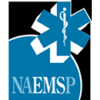Editor’s note: This article originally appeared in the Article Bites blog of the and is reprinted here with permission.
Article Summary by Sarah Fabiano, MD, FACEP, FAAEM
Article reviewed:
Background. Transport of patients to a higher level of care is a decision we make daily in the prehospital setting as well as at the hospital. Air medical services, in particular, not only transports patients quickly, but also brings with it certain interventions and critical care team members that provide additional critical care resources to the scene. Air medical use is categorized into:
- Clinical considerations
- Risk identification and safety considerations
- System integration and quality assurance considerations
Air medical patient selection
Patients may benefit from air medical services when one or more of these three patient-centered needs are identified and met:
- Initiation or continuation of advanced or specialty care and expertise not otherwise available locally from hospital or ground EMS resources;
- Expedited delivery of the patient to definitive care for time-sensitive interventions; and/or
- Extraction, evacuation and/or rescue from environments that are difficult to access due to geography, weather, remote location, distance and other factors that limit timely access to a patient or transport by ground EMS.
Air medical patients should be selective and all EMS requests should go through a central communication center. Care should be taken to avoid helicopter shopping – calling sequential air medical providers trying to secure a resource that may be limited because of weather, safety or other considerations. Reverse helicopter shopping is also deterred, this is where an entity shops for a resource after another air company turned them down – usually for a safety reason.
Air medical transport has been utilized in multiple hospital-based programs, including trauma, STEMI and stroke. They have also been utilized with high-risk OB, specialized patients with IABP, ECMO, Impella’s, etc. Air medical can be used in mass casualty and in environments that are difficult to access by ground. There has been literature to support the use of air in trauma-both because of the time to definitive care but also the critical care that can be started at the scene. Cardiac arrest has been proven difficult in flight, but research is still needed with mechanical CPR machines.
Ground is the preferred method of transportation when it can provide necessary level of care and timely transport to definitive care. It is difficult to research air medicine including the randomization of patients that are in need of time-sensitive care.
Takeaways on air medical transport
Air medical services are an essential part of the healthcare system. It must be utilized in a safe, clinically appropriate manner. EMS physicians play an important role in assuring appropriate utilization of air medical resources.
Editing by James Li, MD; NAEMSP blog editor












